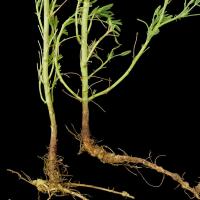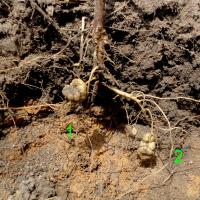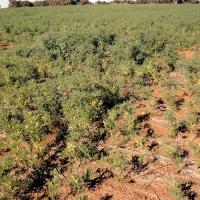Diagnosing hostile subsoil in narrow-leafed lupins
Narrow-leafed lupins have sparse, deep root systems that are not suited to fine textured or shallow soils.
What to look for
- Soils compacted by machinery have a distinct compaction layer or pan in the subsoil with a blocky structure and fractures, and a distinct upper and lower boundary.
- Soils with fine textured subsoils, cemented layers such as silcretes, dense laterite or red-brown hardpans, or free lime.
- These soils frequently have other constraints such as waterlogging, high alkalinity and salinity.
Paddock
- Soils compacted by machinery have a distinct compaction layer or pan in the subsoil with a blocky structure and fractures, and a distinct upper and lower boundary.
- Soils with fine textured subsoils, cemented layers such as silcretes, dense laterite or red-brown hardpans, or free lime.
- These soils frequently have other constraints such as waterlogging, high alkalinity and salinity.
- Plants establish and may grow well in winter, but growth is severely reduced when the temperature rises and topsoils dry.
- Water-stressed plants.
- Plants are more susceptible to waterlogging and spring water stress.
- The taproot may be bent and shortened where it meets the hostile layer.
Paddock
What else could it be
| Condition | Similarities | Differences |
|---|---|---|
| Diagnosing spring drought in narrow-leafed lupins | Reduced yield, early death | More general distribution |
| Diagnosing salinity in narrow-leafed lupins | Reduced yield, early death | In saline areas |
Where does it occur?
- Narrow-leafed lupins have sparse, deep roots are not well suited to fine textured or shallow soils. On these soils, they use water less efficiently than other grain legumes and usually produce lower yields, especially in low rainfall environments. They can yield well in environments or seasons which have a cool and mild finish, where they do not need to rely on water stored deep in the soil profile.
- Narrow-leafed lupins grow poorly in soils containing free calcium.
- Fine textured soils are also more prone to waterlogging.
Management strategies
- Avoid growing narrow-leafed lupins on these soils where possible.
See also
Page last updated: Wednesday, 4 February 2015 - 11:37am




